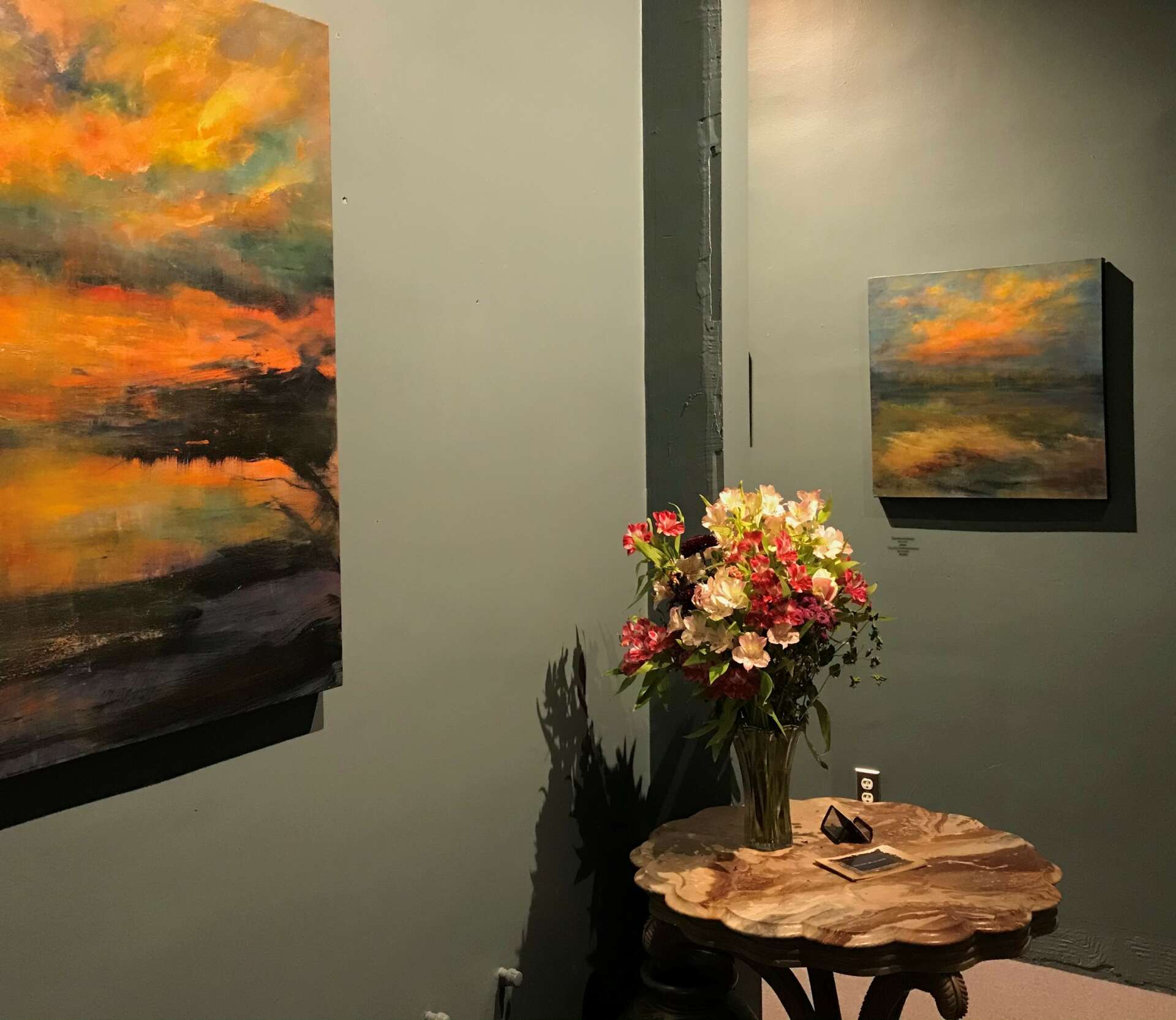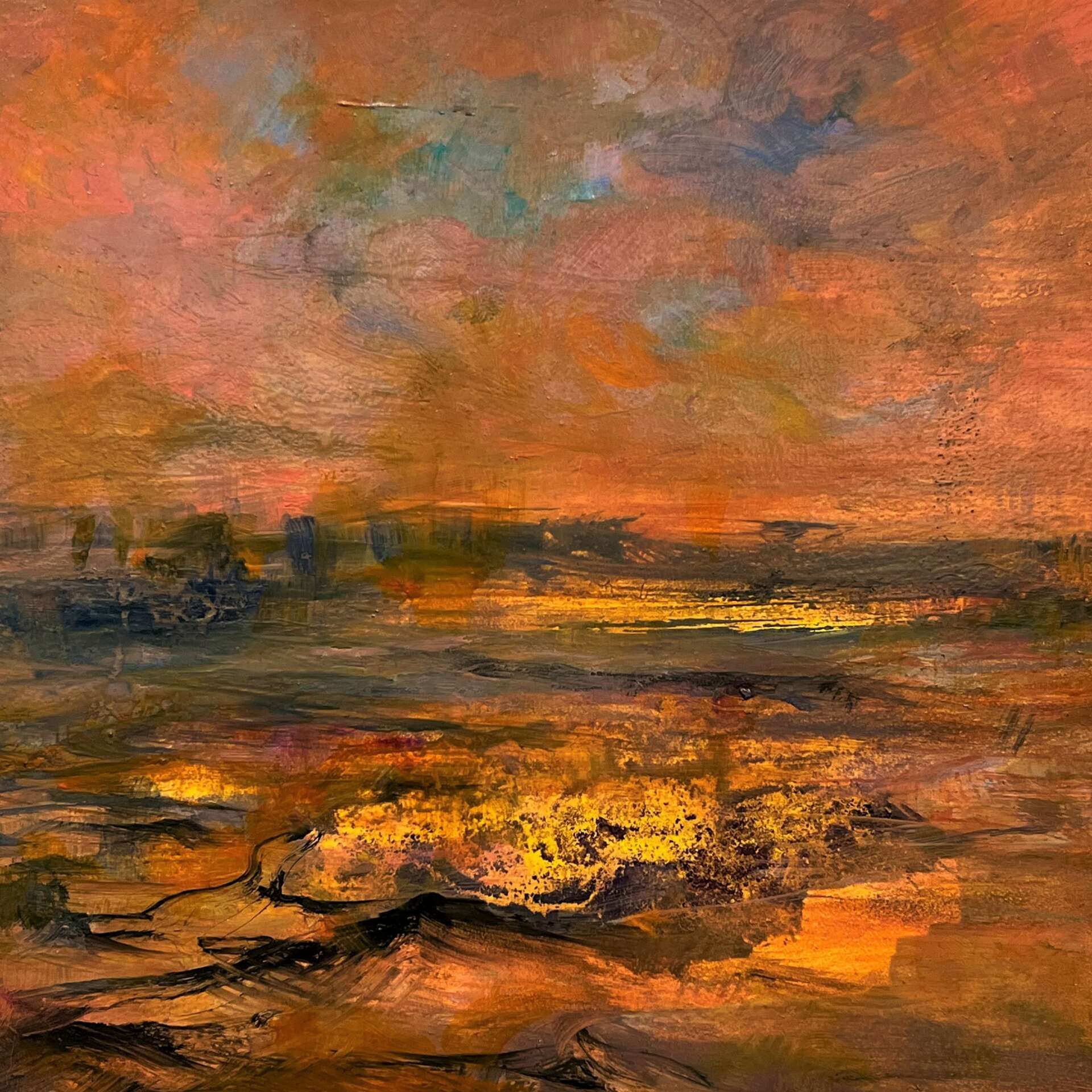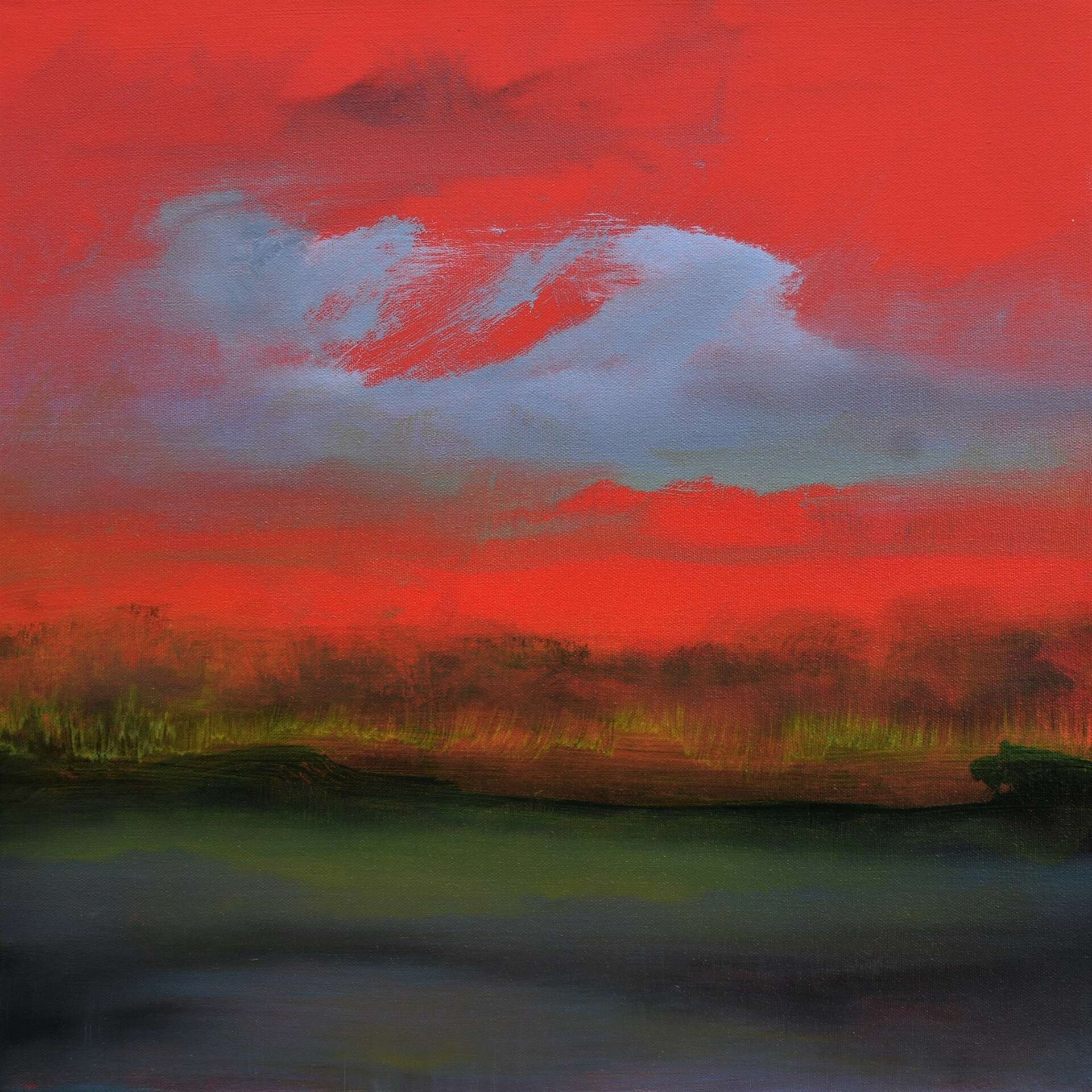We’re excited to introduce you to the always interesting and insightful Tracy Lambros. We hope you’ll enjoy our conversation with Tracy below.
Tracy, thanks for joining us, excited to have you contributing your stories and insights. Are you happy as a creative professional? Do you sometimes wonder what it would be like to work for someone else?
Are you happier as a creative?
Thank you. I am happy as an artist. I have always worked in creative fields, beginning with internships I had with Maryland photographers in my MICA (Maryland Institute College of Art) undergrad days as a photography major. Those internships led to freelance photography jobs when I moved to Manhattan. I have also worked as a freelance art consultant, artists representative, gallery assistant, and curator. My freelance jobs over the years have provided the income and flexibility for me to work in my studio and exhibit my own artwork. These days I work full time as a visual artist exhibiting primarily my oil paintings, but also my photography as well. I only take additional projects if they are meaningful to me.
Do you sometimes think about what it would be like to have a regular job?
If by “regular” you mean a “9 to 5” job, I had one as a production coordinator for a photographic display company in NYC many years ago. While I found the work stimulating and loved working with other artists, photographers, and designers, the job did not allow me the time to devote to my own personal artwork.
Can you talk to us about how you think through these emotions?
All artists have to decide for themselves how they want to live and what they are willing to give up to pursue their art and their creative endeavors. That “regular” job many years ago as a production coordinator provided stability as far as a steady paycheck and health insurance but, in the end, it was not the right choice for the long term because I did not have the time or energy for my own artwork. After I left that job I took five months in a quiet beach community to create a body of work that I exhibited in NYC. That body of work was what I submitted as a portfolio to pursue my MFA at Mount Royal School of Art at MICA – which led to my focus on oil painting. It is not easy to figure out the right balance. A career as an artist is exhilarating and fulfilling, but it can also be very unpredictable, unstable, and frustrating. It can be a roller coaster ride. A high tolerance for ups and downs is necessary. For me it is well worth the ride!


Tracy, before we move on to more of these sorts of questions, can you take some time to bring our readers up to speed on you and what you do?
I am a visual artist, currently focused on oil painting, living in Maryland with my husband Will and our 21-year-old cat Zsa Zsa. I work from my studio on Hooper’s Island, a tranquil, tiny island in the Chesapeake Bay. As mentioned, I studied art at MICA. After spending ten years in Manhattan (including a year living on a houseboat on the Hudson River), and living briefly in Los Angeles, I returned to Maryland to pursue my master’s degree… then met and married my husband Will and decided to put down roots. I paint from my imagination (not from real life or reference photos) and describe my process as intuitive. My natural surroundings on Hooper’s Island as well as places that I have visited (including Maine, Kauai, Virginia, and the coastal regions of California) have provided inspiration for my oil paintings that evoke land, sea, and sky. My paintings, photographs, and drawings have been exhibited in the U.S. and internationally, have garnered awards, and are widely collected. Recent solo exhibition venues include Monument Sotheby’s and Gallery Blue Door- both in Baltimore, and recent juried exhibitions include: Woman’s Essence 2023 in Berlin, Germany, Changing Chesapeake at Chesapeake Bay Maritime Museum, 9 x 19 at First Street Gallery in New York, RED at O’Hanlon Center for the Arts in California, and at venues such as: MGM Grand Hotel at National Harbor, Washington County Museum of Fine Arts, Lowe House of Delegates, Academy Art Museum and Annapolis Maritime Museum. Artwork has been published in issues of Circle Quarterly Art Review, Voyage Baltimore, Tidewater Times, and Vanity Fair U.K. When not in my studio, I spend time traveling, seeing exhibitions, bike riding, reading, gardening, and advocating for causes that make the world a less violent and more equitable place to live.




What can society do to ensure an environment that’s helpful to artists and creatives?
I believe our society would be better balanced by encouraging all young people to have a creative outlet. This would mean not cutting but increasing funding for arts programs in schools. Whether a young person ultimately chooses an artistic field or not, the world could use more creative thinkers and problem solvers.
Also, some cultural institutions and museums are doing better than others, but in general, the art world still has made very little progress towards equality in representation. Women and minority artists are still vastly under-represented by museums, prestigious galleries, and auction houses (both nationally and internationally). Many talented artists are not being seen because the art world is unfortunately still dominated by exhibiting and collecting art by white male artists. Cultural institutions should be enacting policy changes to correct long time systematic inequities in these areas.


Have you ever had to pivot?
Artists are constantly pivoting, adapting, and juggling and I am no exception. I mentioned previously quitting a “9 to 5” job to prioritize creating my own artwork. That was intentional and it worked out well. Some pivots are intentional, and others are due to the challenges that life presents. My late father, Nick, had devastating health events (both physical and cognitive) that led to a decline in his ability to perform everyday tasks without assistance. I was his caregiver for many years, helping him stay as independent as possible, until he passed away in 2018. The pivot in this example is one in which a critical situation arose that required a decision and a very important life choice. He needed help, so that became the priority. It was a privilege to care for my father, but it impacted my career and my personal life tremendously. The time that I had with him was invaluable, but it came at a cost in that I turned down many career opportunities because I did not have the time or energy to commit to them, and I spent less time with my husband doing things that we enjoyed. Sometimes the “pivot” is in making difficult decisions regarding a challenge that life presents, prioritizing what is important at that moment, accepting the choices you make, and moving forward again.
Contact Info:
- Website: TRACYLAMBROS.ART
- Instagram: tracy_lambros_art
- Facebook: /tracy.lambros.56
Image Credits
All images copyright Tracy Lambros


